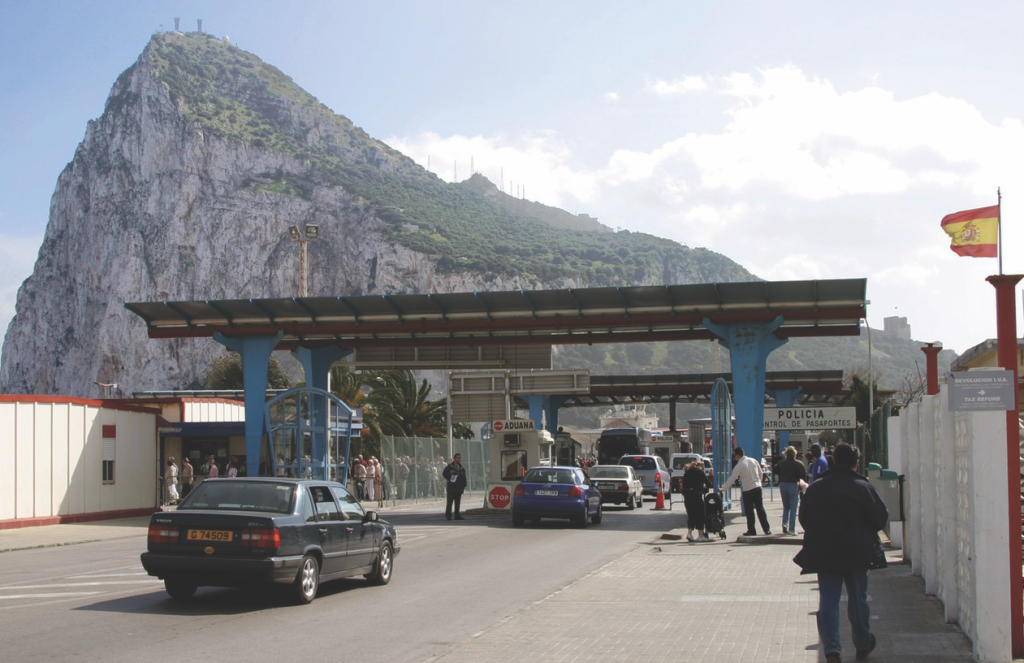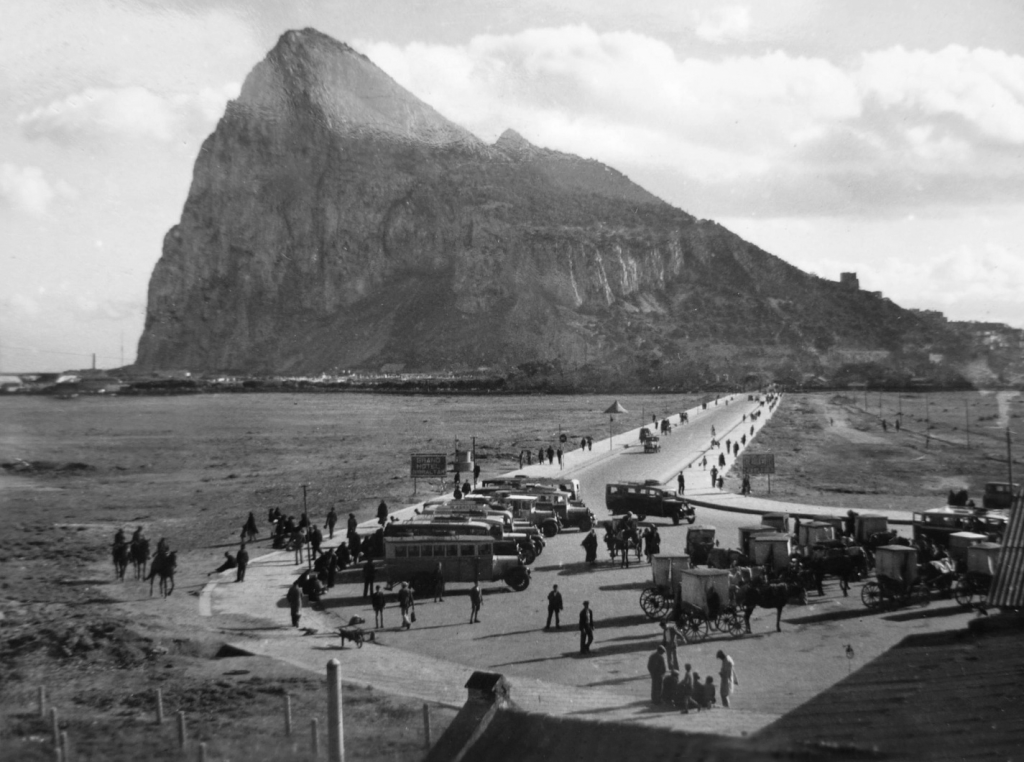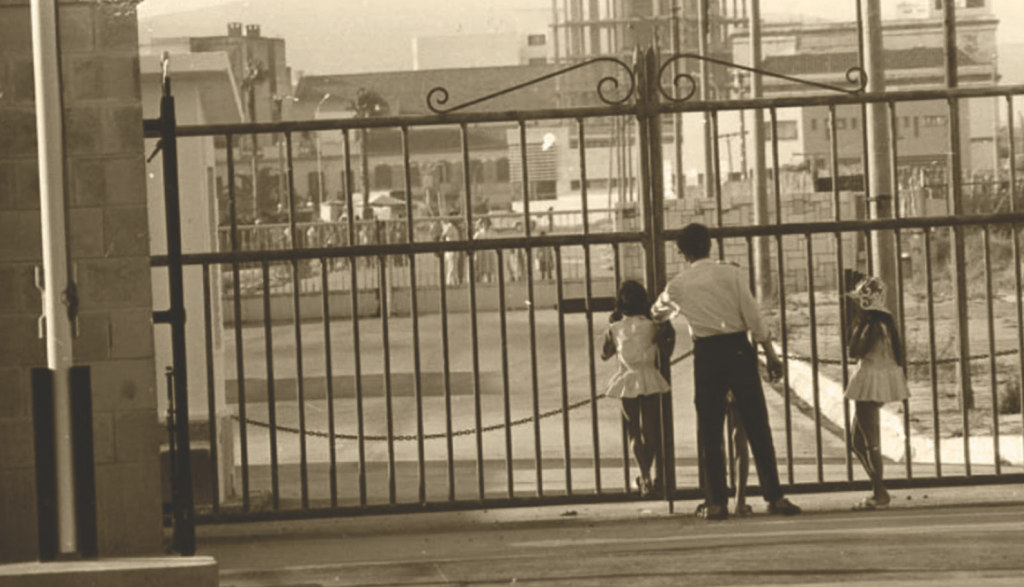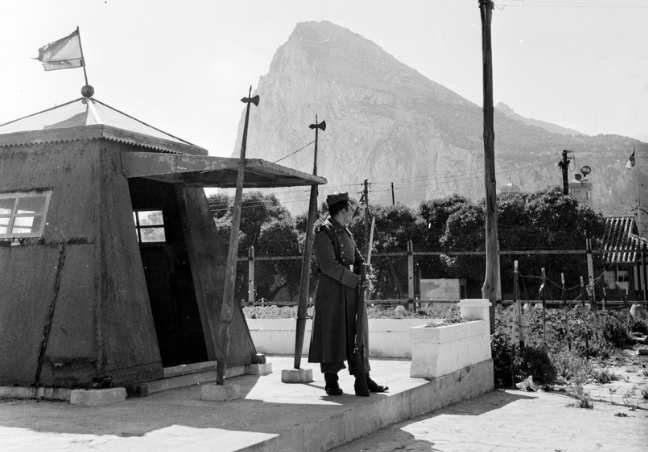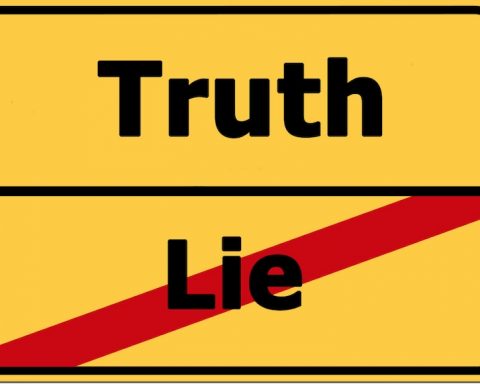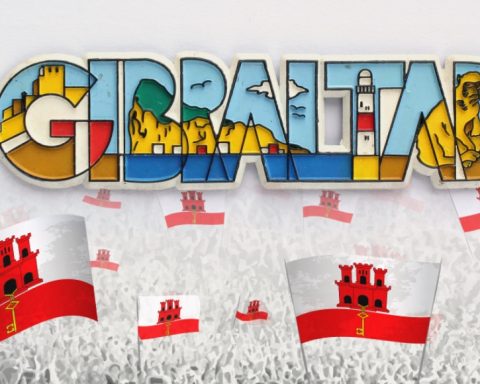Gibraltar was ceded to Britain way back in 1713, as part of the Treaty of Utrecht signed at the end of the War of Spanish Succession. Although the Spanish Crown “yield to the Crown of Great Britain the full and entire propriety of the town and castle of Gibraltar, together with the port, fortifications, and forts thereunto belonging; and he gives up the said propriety to be held and enjoyed absolutely with all manner of right for ever, without any exception or impediment whatsoever”, disputes over the small stretch of land have persisted.
Spain attempted to retake the city fortress on two occasions, the second of which lasted from June 1779-February 1783. This was the last military attempt to retake the Rock, and it seemed Spain had given up hope of regaining sovereignty until the 2nd half of the twentieth century.
The frontier between Gibraltar and Spain was not always restricted. Despite the sieges, there was no physical separation of British and Spanish territory aside from sentry posts along a ‘neutral’ zone. It was not until 1910 when the issue of tobacco smuggling prompted both sides to erect a fence, giving birth to the modern frontier.
The physical border was initially porous – citizens could cross unhindered to visit family members who often resided on either side of the divide. It stayed this way until 1954, when Spain began to impose restrictions as news spread of a scheduled visit to the Rock by Queen Elizabeth II.
The Spanish also issued threats of confiscation to Gibraltarian property in Spain, and announced that the Gibraltarian passport would no longer be recognised. Franco meanwhile attempted to garner international support for Spanish sovereignty of Gibraltar by claiming the UK have violated the terms of Utrecht. The UN, however, was uninterested.
Measures only grew more dramatic when Gibraltar announced that it was to create its own constitution, enshrining the Gibraltarian right to self-determination. Spain banned its citizens from seeking employment in Gibraltar. Moreover, Franco announced that the border was to be closed, and any Spaniards left on the ‘wrong’ side would be stranded.
On the 8th June 1969, the frontier between Gibraltar and Spain was slammed shut by Spain. Approximately 4,800 Spaniards lost their jobs. The replacement jobs that were promised never materialised, and La Línea’s population halved as the economy of the Campo de Gibraltar collapsed.
Families were torn apart, and Spanish and Gibraltarians alike were forced to abandon property on either side of the border. In scenes reminiscent of Cold War Berlin, families would gather at the 100m demarcation area to speak to separated loved ones and to introduced new additions to the family.
Gibraltar was deprived of a vital Spanish labour force, and was isolated from the rest of the world. The British were 1,000 miles away, and help had to be found closer by.
With the frontier shut, Gibraltar looked across the Straight for help. Workers entered the Rock from Morocco, and Moroccans provided fresh produce to prevent any chance of a blockade by the Spanish. The relationship between Gibraltar and Morocco is still evident to this day on the Rock, with Gibraltarian-Moroccans forming a significant part of the country’s demographic.
Things escalated once more in 1970, when the UN stated that Gibraltar should be decolonised. Franco took this as a green light for Spain retaking control. Rumours that Spain was raising an army to retake Gibraltar picked up, and in retaliation the UK sent a task force including aircraft carriers and royal commandos to the Straight. Upon this show of force, Spain backed down from using any military force of its own.
One would have thought Franco’s death in 1975 would have led to a reopening of the border. However, there was little initial change. The dictator had managed to make the retaking of Gibraltar a point of national pride for the Spanish. This persists even to this day, with Spain’s right-wing nationalist parties using the Rock as a political tool.
It was not until Spain’s desire to re-join the international community and the European Economic Community that talks of reopening the border began. As a member of the EEC, Britain had a veto over Spain’s entry, and used that threat to put pressure on the Spanish. It was under the Spanish Socialist Workers Party (PSOE) that the border opened, initially for pedestrians on the 15th December 1982 and subsequently for vehicles on the 4th February 1985.
Slowly things returned to normal, with Spanish labourers seeking employment on the Rock and Spanish businesses along the frontier reaping the benefits. Tourism was economically beneficial to both sides.
Despite this, the relationship has remained a tricky one, and is often a case of ‘one step forward, two steps back’. Positive talks between the UK, Spain and Gibraltar began in 2009, and it seemed that the issue of Gibraltar’s sovereignty would fade.
Things took a step forward when Spanish Foreign Minister Señor Moratinos made the first visit of a Spanish Government official to the Rock in over 300 years. The two steps back followed soon after, as the election of the conservative Partido Popular (PP) in Spain saw the relationship revert to stricter border checks, territorial waters disputes and sovereignty claims.
The future of the frontier is uncertain. The Brexit transition period is coming to an end, and as it stands Gibraltar will be leaving the single market and the European Community. International eyes have been drawn onto what was formerly an issue for Spain and the UK to quarrel over quietly. The small stretch of land diving the two entities is now prime real estate in reaching an agreement for Britain’s withdrawal from the EU. Depending on how this is handled, the next few years could be the most historic in the history of the frontier.
When people imagine the UK’s borders, they often picture the Channel or the more contentious Irish border. However, many are unaware of the border that the UK shares with Spain on the Iberian Peninsula. For over 300 years, the 1.2km stretch of land separating Gibraltar from Spain has been a thorn in Madrid’s backside. Just across the border, the Spanish municipality of La Línea de la Concepción is one of the country’s poorest areas, while Gibraltar has one of the highest GDP per capita in the developed world. Used by both sides as a geopolitical tool over the centuries, Britain’s withdrawal from the European Union has made the frontier as hot a topic as ever. Below, we chronicle the turbulent history of the Gibraltarian frontier.
Sources
https://english.elpais.com/elpais/2019/06/10/inenglish/1560159015_014157.html


